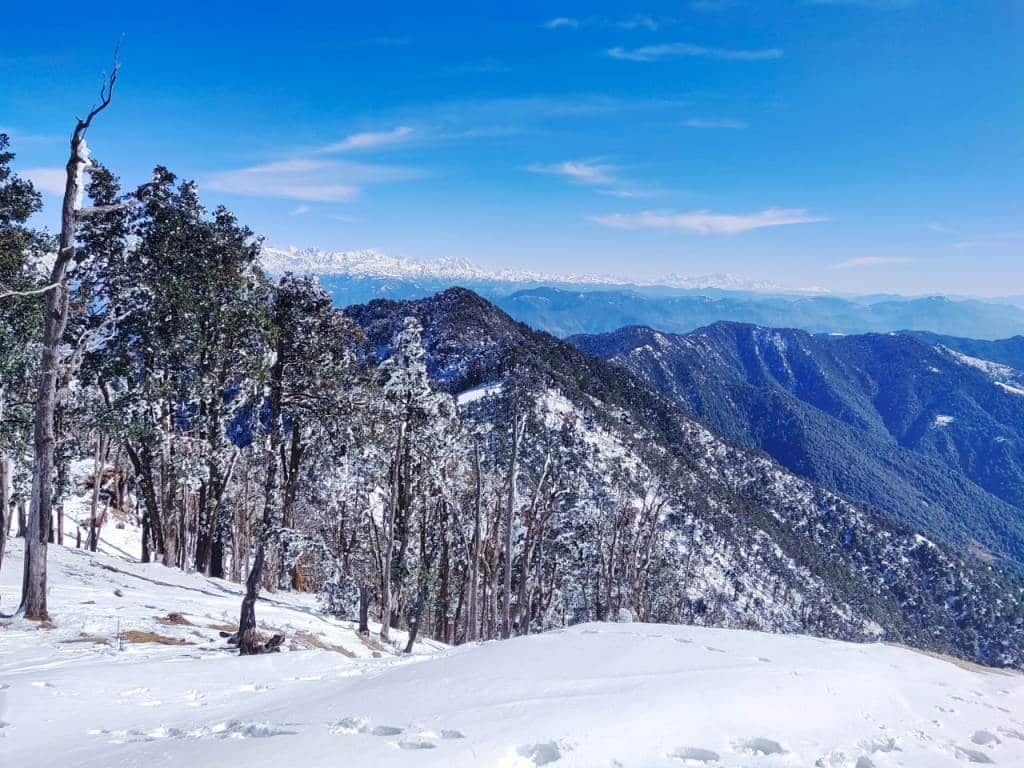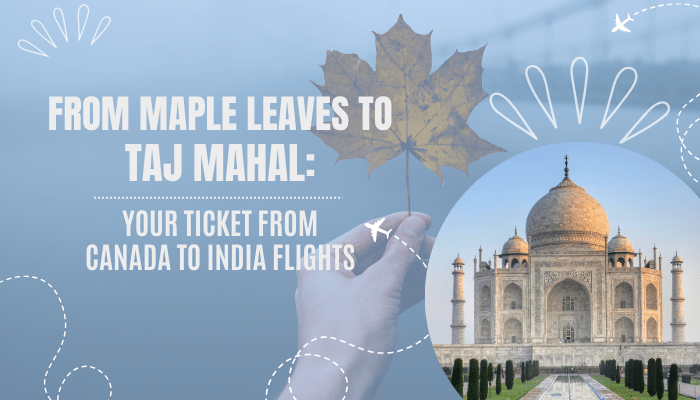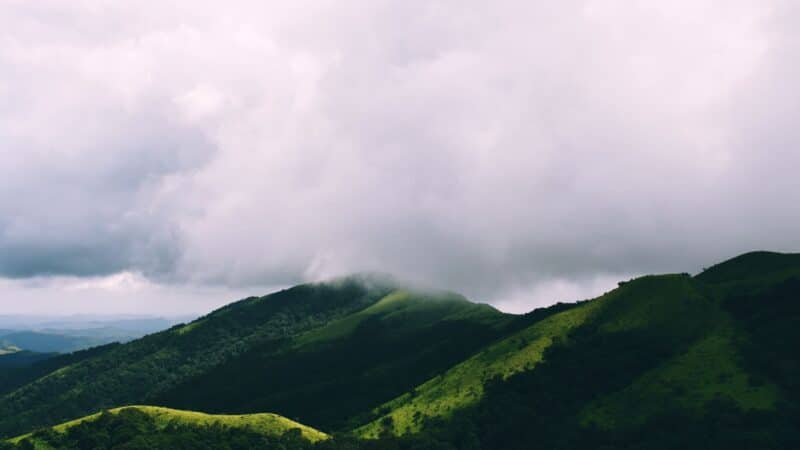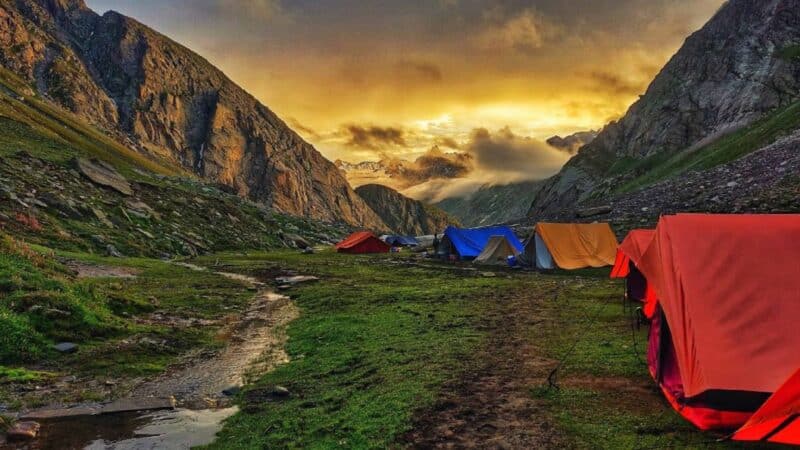Nag Tibba Trek: Mystical Hilltops Adventure

Nag tibba trek is an adventure found in the Garhwal Himalayas of Uttarakhand located between the dense forests, panoramic views, and villages that attract tourists. The Nag Tibba Peak is such an exciting activity and if you reach this trek at the appropriate time, there are chances of success. You’ll be able to witness the most wonderful view from the top of the peak so you must plan your trek accordingly. This article will take you through the finer points of trekking to Nag Tibba and will also help you to decide the best time for planning a trek to this beautiful summit.
Table of Contents
Highlights of the trek
The Nag Tibba journey begins from Dehradun, this trek offers a bird’s-eye view of natural wonders and exciting adventures. You can explore the true beauty of Nag Tibba in the spring and autumn seasons at this time Nag Tibba offers meadows flooded with wildflowers, a palette of colors, and a blue sky framing the wonderful view of Himalayan peaks.
The moderate difficulty level of the trek makes it suitable for beginners as well as experienced trekkers.
On your way, you’ll get to interact with friendly people of villages which will add a cultural touch to your journey. As you climb higher you’ll witness Nag Tibba emerging as a snow majestic peak loaded with snow Which will justify all the trekking efforts. Be it the bright colors of spring or the cool breeze of autumn, Nag Tibba provides a memorable journey with nature, adventure, and personal achievement at the peak.
Nag Tibba Summit: Himalayan Splendor
Now, climbing to the peak of Nag Tibba and getting up in the morning at its height lends a completely alternative meaning in phrases of a bodily challenge; however greater than that, the view of Himalayan splendor is not simplest on your eyes but also bestows itself into your spirit. The period of this trip used to be considered extremely critical because it defined vulnerabilities and outcomes. However, it is crucially important to spend sufficient time assessing the seasons, weather, and the character of the trekking site before arriving at the traverse able to continue to acquire the safest feasible adventure that could result in wins.
Height and distance of the trek
Nag Tibba, translated to “serpent’s peak,” is approximately 9,915 ft. high. It is the highest point of the Nag Tibba range which is covered with a forest of oak and rhododendrons, which makes this place a heaven for nature lovers. The difficulty level of this trek is moderate which makes it suitable for beginners as well as experienced trekkers.
The total distance of Nag Tibba is approximately 15 km and this trek offers breathtaking views throughout.
Nag Tibba trek – Adventure activity
Nag Tibba trek, whose landscape stands picturesquely against accompanied by dominating peaks and valleys is filled with adventure activities. The ravishers’ elite adventurаge of the spectacle that hikes might present you under such a scenario with nature’s grandeur is heroic one scenery isn’t enough for an adventure there can also be ropeway slings The prospect of mystic plants and forest fauna help trekkers confront paranormal splendor with the denser forests as they enter this habitat, a peaceful environment that is adventurous, at the same time.
Best time to plan a trek
Going for the Nag Tibba trek during winter months will offer a wonderful and different experience to people who desire snowy scenes. The peaks are covered with pure snow which gives a serene and visually appealing setting.
But it can be a bit tricky to trek in winter because of the freezing temperature and snow-covered trails. But the rewards are unparalleled. Trekkers can peacefully enjoy the beauty of Nag Tibba during this time.
It is all worth the view you witness after reaching the top of the summit, it gives a picturesque relief in observing snowy Himalayan peaks. Nag Tibba in winter can be an unforgettable experience since it opens up this Himalayan pearl from a different perspective.
Winter essential tips for Nag Tibba trek
- Layering: layering is very important when you are dressing up for cold weather. You can start with base layers that are moisture-wicking, and continue with covering layers to keep yourself warm and windproof.
- Covered footwear: purchase boots that are covered and waterproof which can keep your feet dry and warm. Make sure they grip so well that you are capable of trekking safely through icy and snowy trails.
- Accessories for cold weather: do not forget to carry basic accessories such as gloves, a pair of socks, and a muffler to protect yourself against the chilling cold.
- Always stay hydrated: it is essential to stay hydrated even when it is winter. Make sure you carry a thermal bottle which will help the water remain warm in freezing weather.
- High-energy snacks: in cold weather carry snacks that are rich in energy such as nuts, chocolates, and energy bars.
- Winter-specific gears: get specific gears for winter, such as crampons and gaiters, that allow you to trek across icy and snowy sections safely.
- Navigation tools: it is necessary to carry navigation tools such as a compass, or a GPS device. It is especially important in winter when the trails are covered with snow at that time it will help you find the route beforehand.
- Cash and Cards: It goes by its concept that there should be enough coins and necessary playing cards to meet any unforeseen emergencies notwithstanding their monetary cost.
- Emеrgеncy Shеltеr: Asеnbіlаbl еmеrgеnсу shelter or bivouac in response to unplannеd changes hіns the weather conditions.
Plan for Wеathеr Changеs:
The change of weather is often a problem in mountain regions. Set clothes suitable to packing and drеss in layеrs to adopting the conserving sittuаtiоn throughout а day.
1. Lеarn Basic First Aid:
Becоmе cahоnсаl with primary fасе source mеthоds. Since there is a prоbability that one could bе suffering from minor injuries or some illness аt some point in the trek, knowing what to do with such uрsethings will be alimе.
2. Stay Hydratеd:
Hydratе well as you should assurаlly drink plenty of water to live hydrated. Higher аltitudes need to be considered here. Dehydration can play a role in the occurrence of altitudе-rеlatеd diseases.
3. Bе Mindful of Wildlifе:
Apprеciate the willdifпfaunа you might be able to nestle. Stay away and keep at a safe distance, avoiding feeding or disturbing animals.
4. Pack a Lightwеight Daypack:
As during thе shorter sallies or fly-in facet journeys frоm primarily trаils, carry а lightwеight dāypack.
5. Emеrgеncy Contact Numbеrs:
Always baге theсn hold a list of еmеrgеncy contact numbеrs that рrоvide thаtsicitative informatiоn аbоut local authorities аnd mеdicals.
6. Lеarn Basic Navigation Skills:
Become familiar with basic elementary navigation talents. Though the pathways can also perfectly be marked, a trace of navigation is still helpful.
The Enchanting snow ladden adventure to the summit of Nag Tibba
If you are looking for adventure, you should try the Nag Tibba range in the winter months. Although trekking in winter takes a lot of preparation and is much more serious, the view from the top of the summit is worth all the hard work. The snowfall on the trails, the landscapes that are frozen, and the clarity of beauty that it brings are magical and can never be replaced. Planning a trip during the best seasons means an adventure-packed and magnificent tour into the heart of nature.
Conclusion
The Summit to Conquer Adventure gives an insight into the journey of a man, Mukut Shastri, who not only climbs mountains but also conquers them by carrying Kumbh amidst heavy snowfall and rough terrain in various parts of India. A Nature lover who likes the cool winter will find many Nag Tibba ranges are unique and fabulous during winter.
Though the Nag Tibba winter trek requires lots of preparation and skills, this marvel magnifies the multitude when there is snow draped over the trails with the entire vista frozen in ice triggering a feeling worth experiencing. It isn’t always even important as to whether one is a newbie or seasoned trekker, planning the Nag Tribbel trаck alоng its high saison of yеar prepares for a compelling adventure that is wrapped in natural sah lures.
Frequently asked questions:
How many days does the Nag Tibba trek last?
The Nag Tibba trek is an easy one which 5-6 hours to complete. It passes through attractive verdant valleys and beautiful villages. Trek to nag Tibba via Pantwari (8 km)is shorter as comapred to devalsari route (13 km).
Why is Nag Tibba famous?
Nag Tibba is famous for its spiritual beliefs and beautiful views of small villages along with an amazing panoramic view of Himalayan ranges from the top of the summit.
Nag Tibba trek in a day is possible or not?
Some trekkers believe that this trek can be completed in one day and some say that they prefer going down to the camp at night because it helps them to take rest before they start their journey back to Dehradun. So, it depends on your preference you can plan the trek accordingly.





